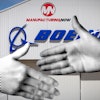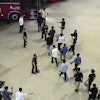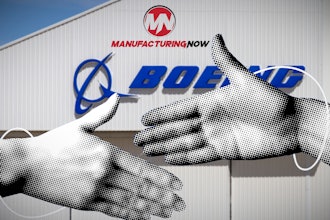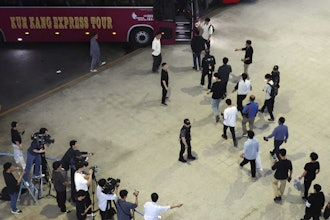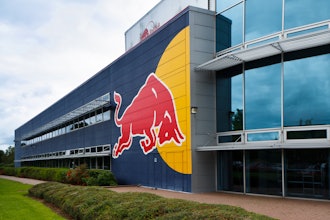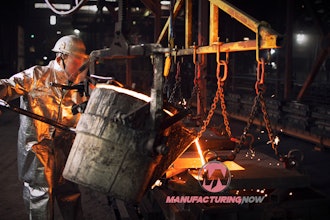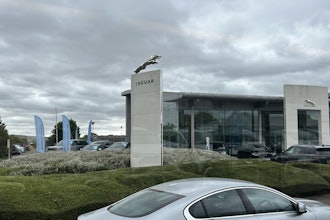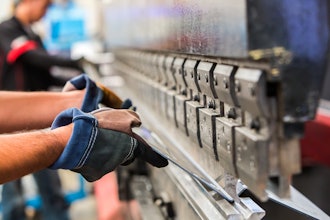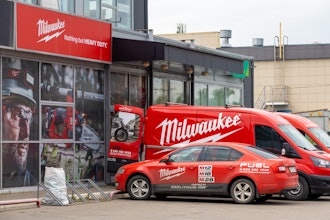For companies like American Water Heater Co. (AWHC), Johnson City, TN, a leading water-heater manufacturer, finding a better method of removing scrap meant saving time, money and headaches resulting from accidental damage to the dies.
"I've used a number of scrap-removal systems, including sheet-metal chutes, belted conveyors, and others, and none of them were very efficient," says Nate Taylor, tool engineer at AWHC. Taylor says AWHC experimented with conveyor-belt systems, but found that scrap tended to get under the belt or in the joints, causing costly repairs. Also, oil from the process would fall onto the belt. The conveyor belts proved adequate for the short-term, but soon required frequent and expensive maintenance to keep them running correctly.
Sheet-metal chutes also failed to meet AWHC's needs. Scrap metal moved slowly or snagged on seams and joints, resulting in jams. When oil from the process got onto the metal chute or a piece of flat scrap metal landed on it, a vacuum would form, locking the scrap piece in place.
AWHC then experimented with a system that used a piston to shake a tapered chute. As the piston struck the chute, the chute vibrated and the scrap metal slid to a conveyor and was taken away. While happy with the theory of this system, the company was disappointed with performance. It was too slow and failed within a couple of months. AWHC needed an improved system that would move scrap sheet metal faster, last longer, and require little or no maintenance.
A local distributor introduced AWHC to a new design called the Pumper, made by Numatics Actuator of Franklin, TN. The Pumper is a reciprocating, air-operated actuator cylinder that provides power for equipment requiring a sustained, cyclic motion. When compressed air enters the inlet port of the Pumper power valve, it is routed to the appropriate end of the cylinder through a manifold and forces the piston to move. Adjustments can be made to change the speed of the strokes independently, making it possible to have the piston move one way quickly and retract slowly. Because the Pumper requires no electricity, there is no chance of dangerous spark generation, making it ideal for use in hazardous environments. It is air-powered, so there is virtually no maintenance and no lubricating fluids or oils to worry about.
Engineer Taylor worked with Numatics Actuators to design and build a prototype system for AWHC. After several designs, the Pumper was integrated with the chute assembly fabricated by a local manufacturer. The chute is made of formed metal so there are no seams or cracks. The design incorporates high sidewalls to prevent scraps from falling to the floor. In addition, AWHC designed the chute with slight dimples. This prevented an oil vacuum from forming between the scrap and the chute.
"When the scrap falls from the die to the chute, there's a tendency for them to bounce in the air," Taylor explains. "The sidewalls on the new removal system are high enough so it can't bounce over the sides like it might in some conveyors." Also, the operator can see the scrap coming out of the press, which increases the security of the operation and helps preserve the dies.
"If the scrap was hidden from view, the scrap could get hung up and the operator wouldn't know it until it crashed the die," says Taylor. "So the scrap is channeled from the back of the die all the way to the front. The operator can keep their eyes on it."
AWHC's scrap steel now comes off the top of the die and falls through to a slightly inclined chute which is struck by the arm of the Pumper. This causes metal scraps to jump forward and slide down the chute to a conveyor belt. The chute is kept clear and free of jams, preventing damage to dies. The new system has been in operation for six months without a single cylinder failure and removes scrap faster, according to Taylor. The cost was less than half that of the original device.
AWHC was so pleased with the functioning of the new cylinder, it incorporated it into a new press-removal system. Instead of using a mechanical knockout - a bar that knocks the finished part free that has to be adjusted every time the die is changed - they use a Numatics Actuator air-pressure system to hold the part in the die. When the die closes, it expels the air out of the body of the cylinder and creates a vacuum. When the cylinder is reactivated, the part pops free. Operators can change dies quickly and often - typically five or six times a day - since adjustments to the knockout does not have to be made. As a result, they have seen improvements in both time and part quality.
"The foremen and the operators on the line couldn't believe how much better the parts looked using air to hold them in place during the press cycle," says Taylor. "They pestered me for days and days to install this system on the other presses."
AWHC plans to integrate additional air-driven actuators into their systems, which will "pay big dividends," says Taylor. "Everybody who sees it just stands there with their mouths open, and says, 'Well, I'll be darned.'"

